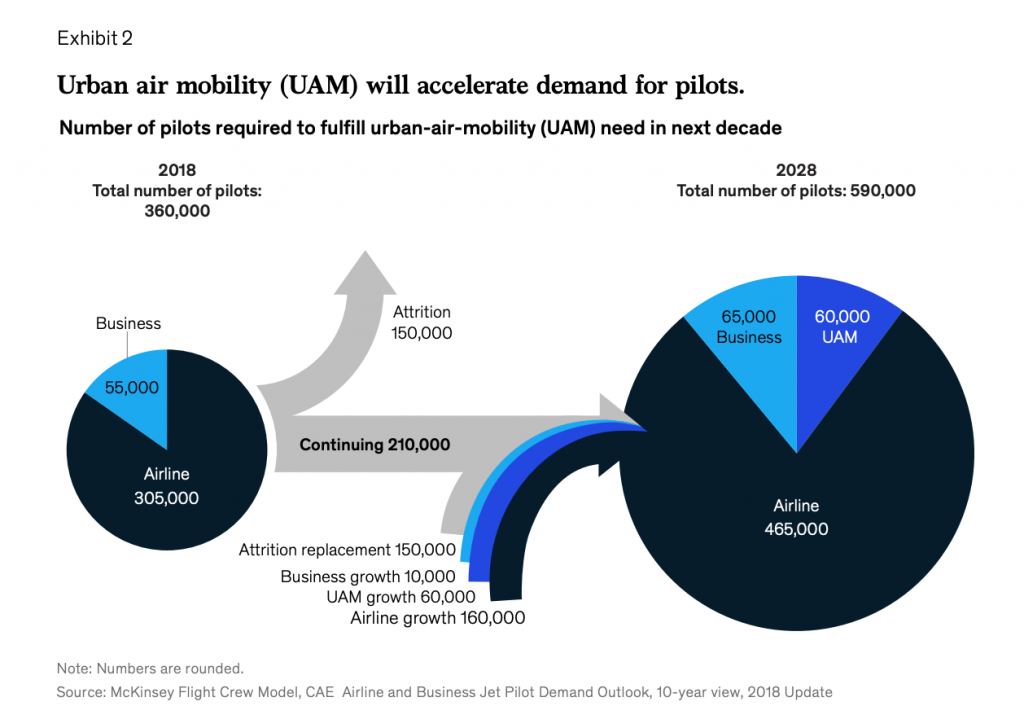
A study by consultancy firm McKinsey & Company has suggested that 60,000 pilots – roughly 17 percent of the total number of commercial pilots in 2018 – could be required by 2028 to cater for the growing Urban Air Mobility (UAM) market.
Compiled by Uri Pelli and Robin Riedel, the report identifies the challenges that need to be overcome, such as technology and regulation, public acceptance and air traffic management to physical infrastructure.
It added that before the Covid-19 outbreak, smaller aircraft operators were struggling to find qualified pilots, with current commercial operators expected to require 320,000 newly trained aviators over the next 10 years.
The pair explain, “The Covid-19 crisis will defer the need for these pilots by a few years and potentially even lower the number required if commercial aviation does not return to its original trajectory. That said, there will still be a need for most of those new pilots toward the end of the decade. Pilots for UAM would come on top of that.”
They continued, “Before the pandemic, several promising and well-funded players announced that they were aiming to start UAM operation by 2023. Of course, the Covid-19 crisis might slow a few down and shift the start dates by a year or two.”
Pelli and Riedel added that the spiralling costs of training 60,000 pilots – between USD4 billion and USD6 billion – would need the help of financial institutions to ‘overcome the tight supply of financing.’
The report says: “These vehicles will eventually fly autonomously, but that could take a decade or more because of technology issues, regulatory concerns, and the need to gain public acceptance.”
It continues: “Until autonomous flight of hundreds or thousands of vehicles above cities across the globe becomes a reality, the industry must recruit, train, and deploy thousands of pilots – an important but much less visible challenge than other issues associated with urban air mobility.”
The study concludes: “While UAM’s long-term future will be autonomous, the industry must initially recruit, train, certify and manage tens of thousands of pilots. Stakeholders across the spectrum – manufacturers, operators, flight schools, regulators, and employment agencies – must collaborate to tackle the significant challenges the piloted ramp-up period is certain to pose.” Adding, “They do not have a lot of time to prevent the supply of pilots from becoming the bottleneck that stalls this new industry’s development.”
For more information


